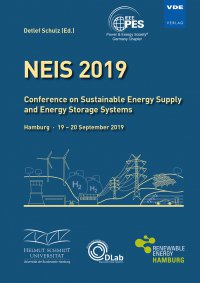Comparison of RMS and EMT Models of Converter-Interfaced Distributed Generation Units Regarding Analysis of Short-Term Voltage Stability
Conference: NEIS 2019 - Conference on Sustainable Energy Supply and Energy Storage Systems
09/19/2019 - 09/20/2019 at Hamburg, Deutschland
Proceedings: NEIS 2019
Pages: 6Language: englishTyp: PDF
Personal VDE Members are entitled to a 10% discount on this title
Authors:
Steinhaeuser, Lucas; Coumont, Martin; Weck, Sebastian; Hanson, Jutta (Department of Electrical Power Supply with Integration of Renewable Energies, Technische Universität Darmstadt, Landgraf-Georg-Str. 4, 64283 Darmstadt, Germany)
Abstract:
This paper compares different types of simulation models for time-domain analysis of fault ride-through events of converter-interfaced distributed generation units. The simulation scenario covers the connection of a distrib-uted generation unit to a distribution system with a single local load. Symmetrical short circuits and fault ride-through of the distributed generation unit are simulated and short-term voltage stability is evaluated using EMT and RMS (phasor type) simulation models. A detailed EMT model is compared to a RMS model based on average value modeling with fully represented control system and to a simplified RMS model. Differences between the three models are evaluated based on dynamic quantities of currents and voltages as well as the critical clearing times for the prevention of voltage collapse. Influence of grid impedance and control behavior of the converter on the critical clearing times are analyzed and compared for each model. Results show resemblance of stationary and disparity of transient behavior for weak, inductive grids with slight overestimation of critical clearing time by both RMS models.


